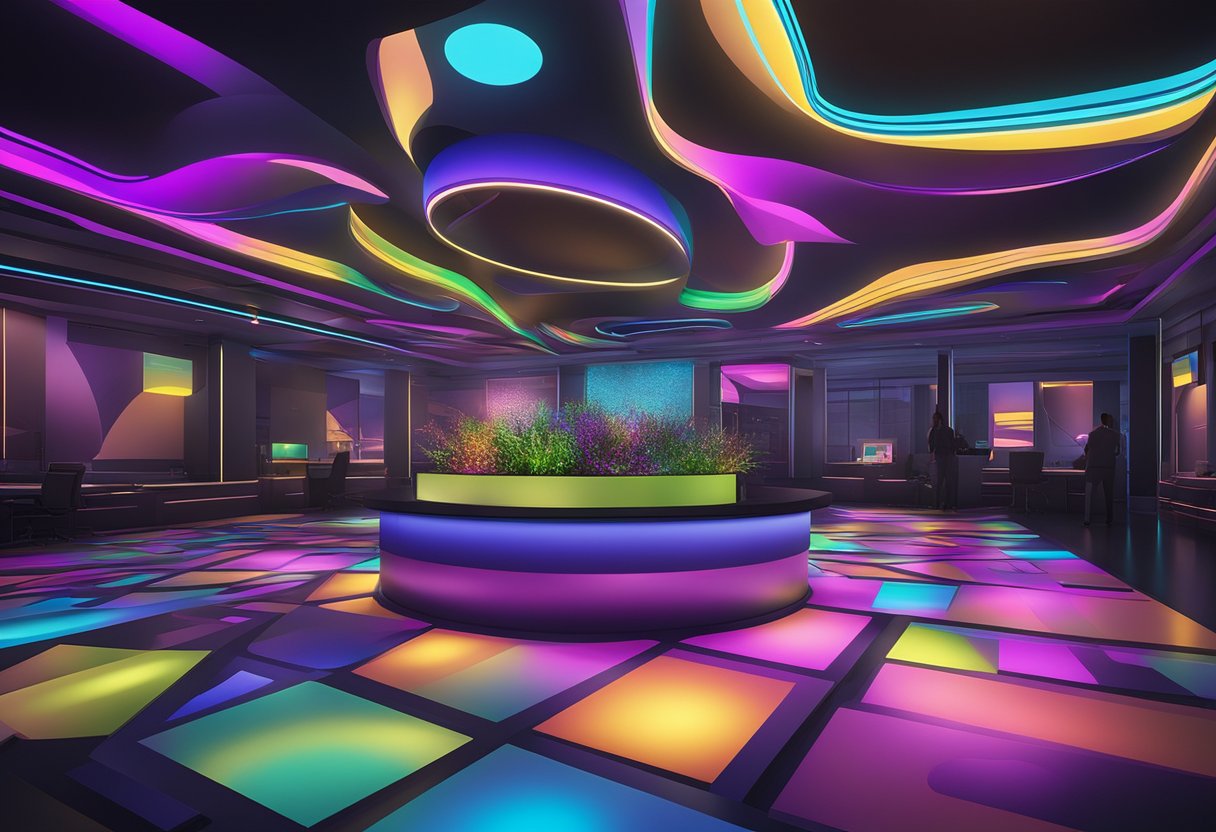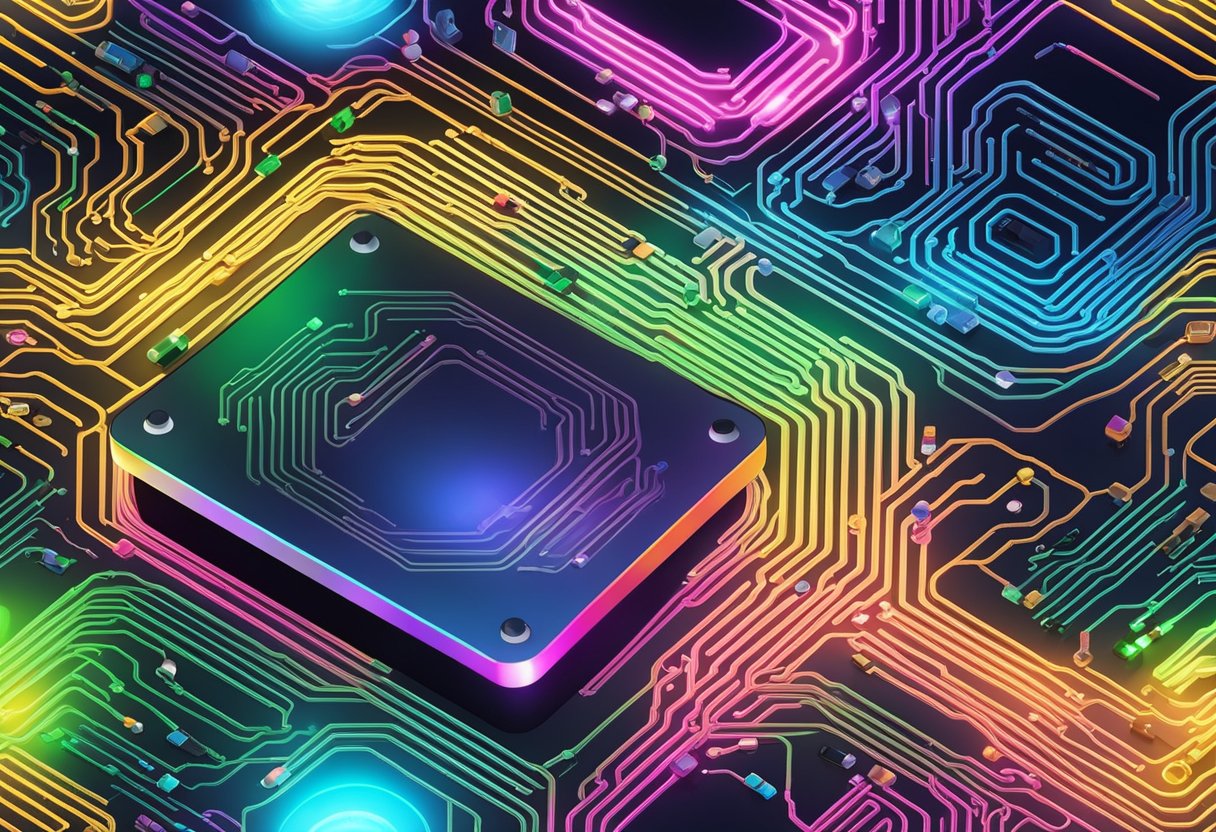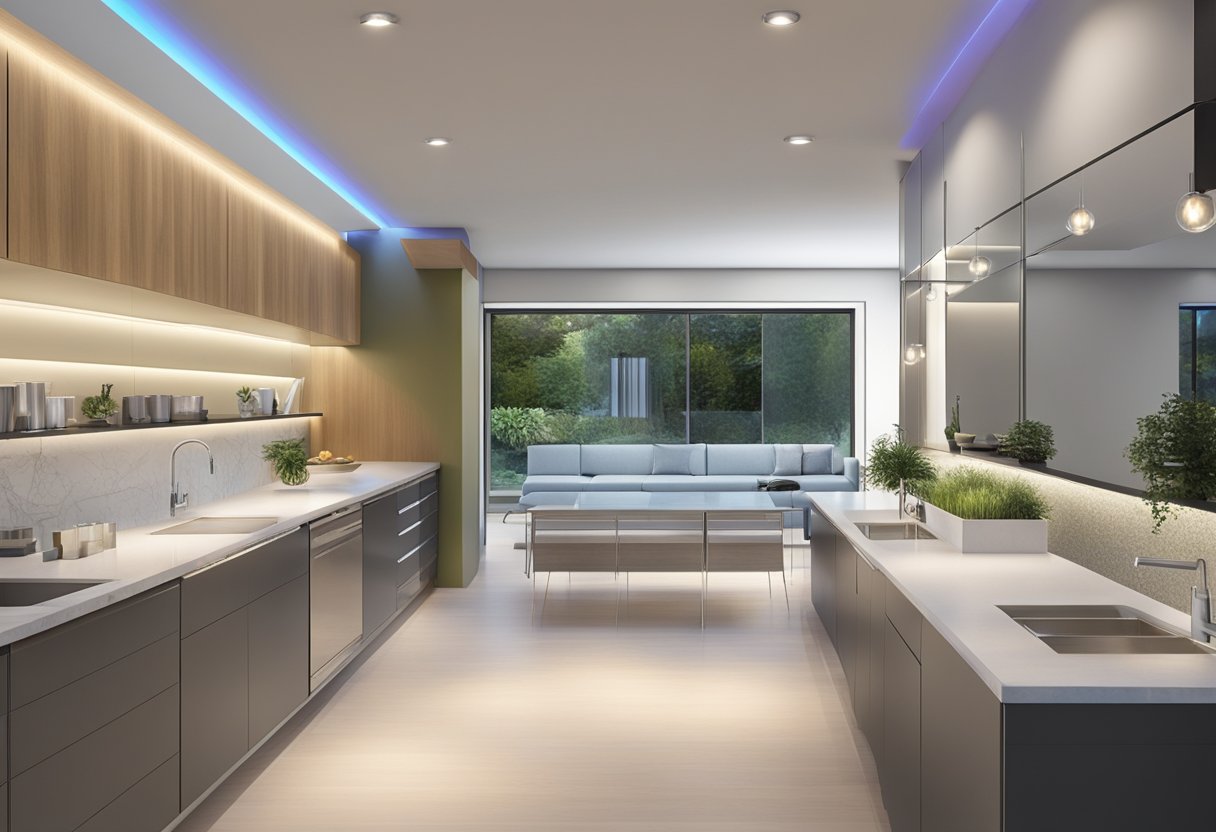Contact
Write to Us And We Would Be Happy to Advise You.
Do you have any questions, or would you like to speak directly with a representative?
By peter
Custom LED systems are becoming increasingly popular in a variety of settings. Whether for commercial or residential use, custom LED systems are designed to meet specific lighting needs and preferences. These systems offer a range of benefits, including energy efficiency, long lifespan, and customizable options for color and brightness.

One of the most significant benefits of custom LED systems is their energy efficiency. Compared to traditional lighting options, such as incandescent or fluorescent bulbs, LED lights use significantly less energy to produce the same amount of light. This translates to lower energy bills and a reduced environmental impact. Additionally, LED lights have a longer lifespan than traditional bulbs, meaning less frequent replacement and maintenance.
Custom LED systems are also highly customizable, allowing for a range of options in terms of color and brightness. This makes them an ideal choice for a variety of settings, from restaurants to homes to outdoor spaces. Whether looking for a warm, inviting ambiance or a bright, vibrant atmosphere, custom LED systems can be tailored to meet specific needs and preferences.

Custom LED systems are a popular choice for those who want to add a touch of personalization to their lighting setup. These systems are versatile and can be used for various applications, including home decor, automotive lighting, and stage lighting. In this section, we’ll go over the basics of custom LED systems, including the technology behind them and the components that make up these systems.
LEDs, or light-emitting diodes, are semiconductor devices that emit light when an electric current passes through them. Unlike traditional incandescent bulbs, LEDs do not have a filament that can burn out, making them more durable and long-lasting. LEDs also consume less energy and produce less heat, making them an energy-efficient and eco-friendly lighting solution.
LEDs produce light in a variety of colors, including red, green, blue, and white. The color of an LED is determined by the material used in the semiconductor, which emits light at a specific wavelength. Custom LED systems often use RGB LEDs, which can produce a wide range of colors by combining red, green, and blue light.
Custom LED systems consist of several components that work together to produce light. These components include:
Custom LED systems can be as simple or as complex as you want them to be. With a basic understanding of the technology and components involved, you can create a custom LED system that suits your needs and adds a unique touch to your lighting setup.

Designing custom LED solutions requires a well-defined process to ensure that the final product meets the client’s specifications and expectations. The customization process typically begins with a consultation between the client and the LED manufacturer. During this consultation, the client will discuss their requirements and preferences, including the desired lighting effect, color temperature, and brightness level.
After the consultation, the LED manufacturer will create a design proposal that outlines the proposed solution, including the type of LED lighting, the number of fixtures required, and the estimated cost. The client will then review the proposal and provide feedback, which the manufacturer will use to refine the design.
Once the design is finalized, the manufacturer will begin the production process. This may involve sourcing custom components, such as LED strips or panels, and assembling them into the final product. The manufacturer will also test the custom LED solution to ensure that it meets the client’s specifications and quality standards.
When designing custom LED solutions, there are several factors to consider to ensure that the final product meets the client’s needs. Some of these factors include:
By considering these factors when designing custom LED solutions, clients can ensure that they receive a high-quality product that meets their needs and exceeds their expectations.
Custom LED systems are versatile and can be used in a variety of applications. These systems are designed to meet specific lighting needs, making them ideal for residential, commercial, and industrial use.
Custom LED systems are perfect for residential lighting applications. They can be used to create a unique ambiance in any room of the house, from the kitchen to the bedroom. LED strips can be installed under cabinets, on staircases, and even around mirrors to create a warm and inviting atmosphere. In addition, LED systems can be used for outdoor lighting, illuminating pathways, and highlighting landscaping features.
Custom LED systems are also ideal for commercial use. They can be used to create a welcoming atmosphere in retail stores, restaurants, and hotels. LED systems can also be used for task lighting and accent lighting in offices, providing a comfortable and productive work environment. In addition, LED systems can be used for signage, ensuring that businesses are visible and easily identifiable.
Custom LED systems are also useful in industrial applications. They can be used for machine vision lighting, inspection lighting, and general illumination in manufacturing facilities. LED systems are also ideal for hazardous locations, as they are energy-efficient and generate less heat than traditional lighting sources. Additionally, LED systems can be used for emergency lighting, ensuring that workers can safely evacuate in the event of a power outage.
In conclusion, custom LED systems are versatile and can be used in a variety of applications. Whether it’s for residential, commercial, or industrial use, LED systems offer a unique and energy-efficient lighting solution.
Installing custom LED systems can be a fun and rewarding experience for car enthusiasts. However, it is important to follow the right installation guidelines to ensure that the LED system is installed correctly and safely.
Before starting the installation process, it is important to have all the necessary tools and equipment. This includes a soldering iron, wire strippers, electrical tape, and a multimeter. It is also important to have a good understanding of the wiring diagram for the LED system and the car’s electrical system.
When installing the LED system, it is important to start with the power source. This can be the car’s battery or fuse box. It is important to connect the LED system to a switch that can turn the system on and off. This will help to prevent the LED system from draining the car’s battery when not in use.
Once the power source is connected, it is important to connect the LED system to the car’s electrical system. This can be done by tapping into the car’s existing wiring or by running a new wire from the LED system to the car’s electrical system. It is important to use the correct gauge wire for the LED system to prevent overheating and damage to the system.
When installing custom LED systems, it is important to follow safety precautions to prevent injury or damage to the car.
First, it is important to disconnect the car’s battery before starting the installation process. This will prevent any electrical shocks or short circuits.
Second, it is important to use the correct tools and equipment for the installation process. This includes using a soldering iron and wire strippers to ensure that the wiring is connected correctly.
Third, it is important to use the correct gauge wire for the LED system. Using a wire that is too thin can cause overheating and damage to the system.
Finally, it is important to test the LED system before driving the car. This will ensure that the system is working correctly and that there are no issues with the wiring or connections.
By following these installation guidelines and safety precautions, car enthusiasts can install custom LED systems that are both functional and safe.
Custom LED systems require advanced control and programming capabilities to achieve the desired lighting effects. This section covers two important aspects of controlling and programming custom LED systems: software integration and user interfaces.
Software integration is an important aspect of controlling custom LED systems. OpenRGB is a network-based Software Development Kit (SDK) that allows third-party software to control all of your RGB. OpenRGB provides SDK bindings for multiple programming languages including C++, Python, C#, Java, and more. This allows for game integrations, music visualization, ambient lighting, and anything else you can imagine.
User interfaces are an essential part of controlling custom LED systems. LED light controllers are incredibly useful devices that allow for advanced control over LED lighting systems. They serve as the central hub for digitally controlling and programming LED strip lights, bulbs, panels, and fixtures. LED controllers unlock the dynamic capabilities of LED technology and are becoming increasingly popular in various settings.
RGB LED controllers are a popular option for controlling color in LED lighting systems. The controller serves as the brains of an RGB LED system. It allows you to select colors, create lighting effects, set brightness levels, and automate dynamic programs. DMX512 is a professional lighting control protocol for advanced programming. Special Events can be built with excitement and energy with custom lighting. Stage and DJ Lighting can be controlled with ease using LED pixel controllers, which can store pre-programmed effect sequences internally. Many also allow custom programming through desktop or mobile apps.
When it comes to custom LED systems, energy efficiency is a top priority. LED lighting is already known for its energy-saving capabilities, but there are additional steps that can be taken to maximize efficiency. One such step is to use dimmer switches or occupancy sensors. These devices can help reduce energy consumption by automatically turning off lights when they are not needed or adjusting the brightness level according to the amount of natural light in the room.
Another way to increase energy efficiency is to choose LED lights with a high luminous efficacy. This refers to the amount of light produced per unit of power consumed. LED lights with a high efficacy can produce the same amount of light as traditional incandescent bulbs while using significantly less energy.
In addition to energy efficiency, sustainability is another important factor to consider when designing custom LED systems. One way to promote sustainability is to use LED lights with a long lifespan. LED lights can last up to 25 times longer than incandescent bulbs, which reduces the amount of waste generated by replacing them.
Another sustainable practice is to choose LED lights with a low carbon footprint. This means selecting lights that are manufactured using environmentally friendly materials and processes. It also means choosing lights that are recyclable or can be disposed of safely without harming the environment.
By implementing these energy-saving tips and sustainable practices, custom LED systems can not only save energy and reduce costs but also help protect the environment.
Custom LED systems are a great way to add a unique touch to any space. However, like any other lighting system, they require maintenance and troubleshooting to ensure optimal performance. In this section, we will discuss routine maintenance and common issues and solutions for custom LED systems.
Regular maintenance is key to ensuring the longevity and performance of custom LED systems. Here are some routine maintenance tasks that should be performed:
Despite routine maintenance, issues may arise with custom LED systems. Here are some common issues and solutions:
By performing routine maintenance and addressing common issues, custom LED systems can provide optimal performance and longevity.
LED technology is constantly evolving, and future advancements are expected to improve the efficiency, performance, and versatility of LED systems. One of the most significant advancements in LED technology is the development of custom LED systems. These systems are designed to meet the specific lighting needs of different applications, including commercial, industrial, and residential lighting.
Custom LED systems offer several advantages over standard LED lighting systems. They can be tailored to provide optimal lighting conditions for different environments, such as museums, art galleries, and hospitals. Custom LED systems can also be designed to integrate with other building systems, such as HVAC and security systems, to provide a comprehensive solution for building automation.
Another significant advancement in LED technology is the development of smart LED systems. These systems use sensors, wireless communication, and advanced software to optimize lighting conditions based on occupancy, ambient light levels, and other factors. Smart LED systems can also be controlled remotely, enabling building managers to adjust lighting levels and schedules from anywhere.
The LED lighting market is expected to grow significantly in the coming years, driven by several emerging market trends. One of the most significant trends is the increasing demand for energy-efficient lighting solutions. LED lighting is highly energy-efficient, consuming up to 75% less energy than traditional lighting systems. This makes it an attractive option for businesses and homeowners looking to reduce their energy consumption and cut costs.
Another emerging market trend is the growing demand for human-centric lighting solutions. Human-centric lighting is designed to mimic natural daylight, providing a more comfortable and productive environment for building occupants. This type of lighting can also improve mood, reduce stress, and enhance cognitive function.
Custom LED systems and smart LED systems are expected to play a significant role in shaping the future of the LED lighting market. These systems offer several advantages over standard LED lighting systems, including improved efficiency, performance, and versatility. As the demand for energy-efficient and human-centric lighting solutions continues to grow, custom LED systems and smart LED systems are likely to become increasingly popular.
Do you have any questions, or would you like to speak directly with a representative?